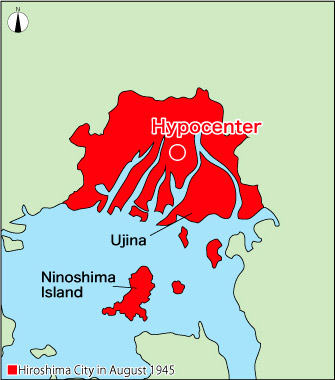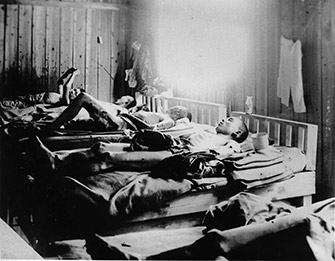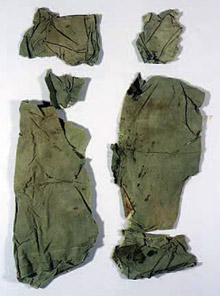Ninoshima Island
With the beginning of the Sino-Japanese War in 1894, Hiroshima began growing militarily, becoming the primary base for dispatching troops to the Asian continent. In 1895, a quarantine facility for disinfecting troops returning from foreign lands was established on the island of Ninoshima. Subsequently, other military facilities were built there that, by the end of the war, occupied the eastern half of the island.
At the time of the bombing, Ninoshima had stores of medicine and medical supplies for 5,000 people. Since the island is more than 8 kilometers from the hypocenter and hardly any of the buildings were damaged by the A-bomb, it quickly became the largest relief station. Approximately 10,000 injured victims were transported there over a 20-day period.

Source: “Ninoshima—Hiroshima and Hiroshima”
The hospital attached to the quarantine station became an emergency room sick ward, but it and the guardhouse quickly filled beyond capacity. Even the horse quarantine and stables became relief stations. Surgery was performed in the operating room day and night without even enough time to clean it properly. Arms and legs had to be amputated when bacteria in the wounds was destroying muscle. The severed limbs were tossed out the windows, piling higher than the window frames.
The stores of medical supplies were soon exhausted. Unable to receive proper medical treatment, the wounded suffered and died one after another. Corpses were piled high for mass cremation, but as days went by the dead exceeded cremation capacity. Bodies were thrown into caves, air-raid shelters, or any available hole in the ground.
(From: “Ninoshima—Hiroshima and Hiroshima” by Committee for Ninoshima Boys and Girls Gathering against A and H Bombs)

Relief Station at Ninoshima Quarantine
Many of the injured brought to Ninoshima were housed in the Second Quarantine.
Around August 7-20, 1945
Photo by Army Marine Headquarters Photographer’s Unit
Donated by Keisuke Misonoo

Takae Yagyu

Tattered fragments of work trousers
Ikue Fukuda's older sister, Takae Yagyu (then, 13) had taken the day off, but wanting to see a friend she hadn't seen in a long time, went to a building demolition site, where she experienced the atomic bombing.
Her mother, Hisako, looked for her every day and found her at a reception center on Ninoshima on the 12th. Takae's face was swollen from burns and she was only wearing the tattered remnants of clothing. Although her mother called out to her to tell her she had arrived, Takae wasn't fully conscious. In the evening of the 13th, she was transported from Ninoshima to Miyajima. She died the next day, calling out for her father and mother.
Donated by Ikue Fukuda
